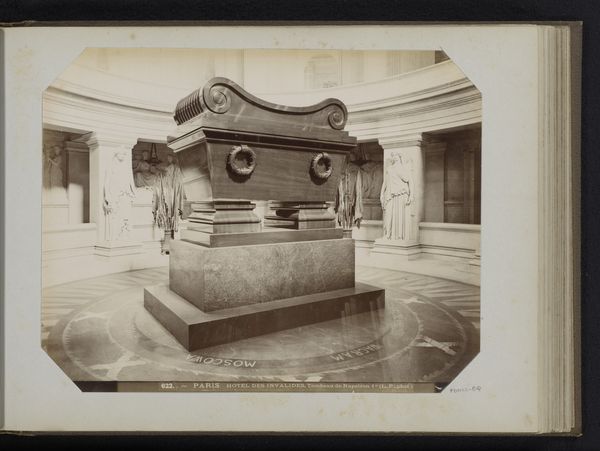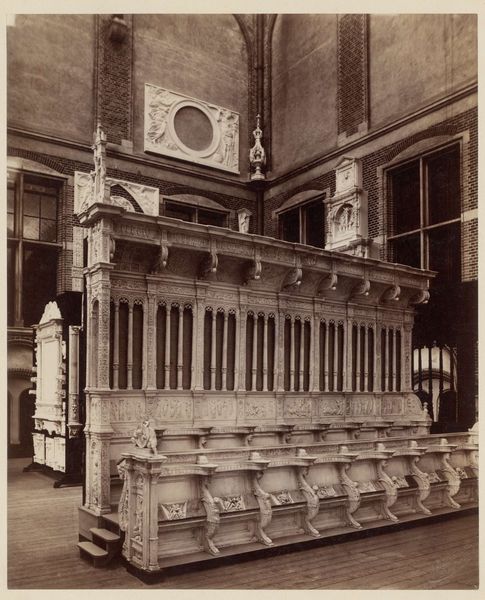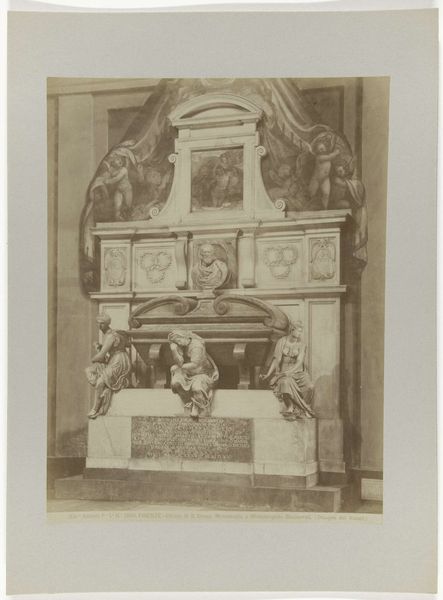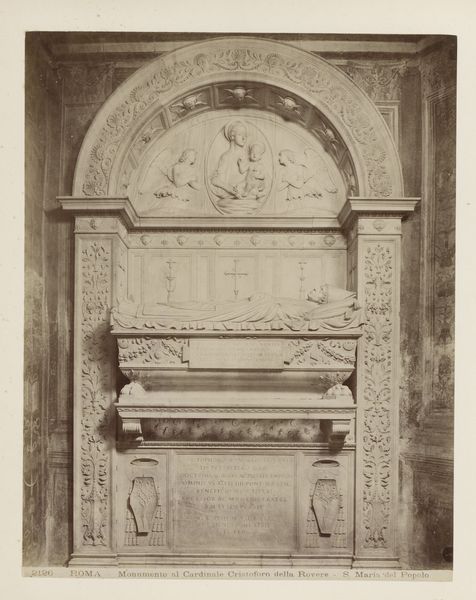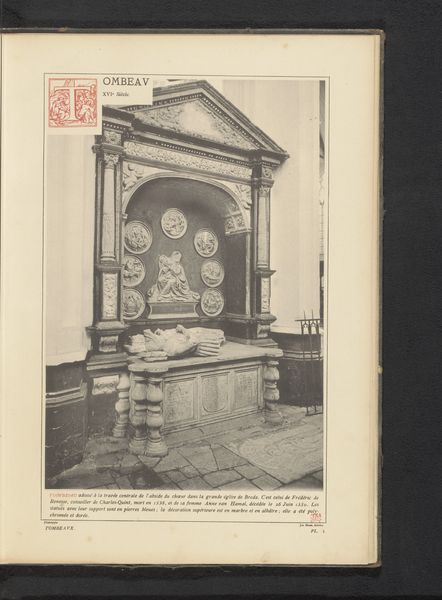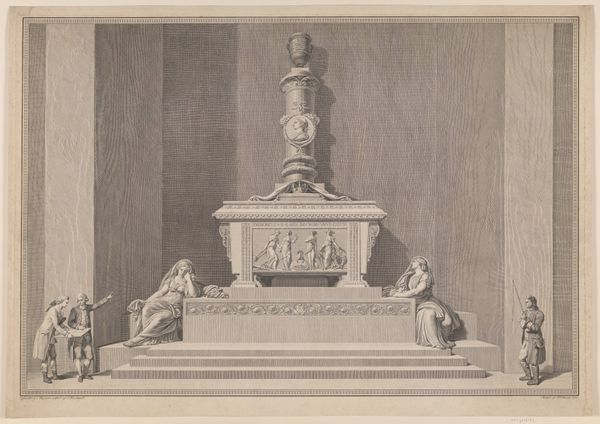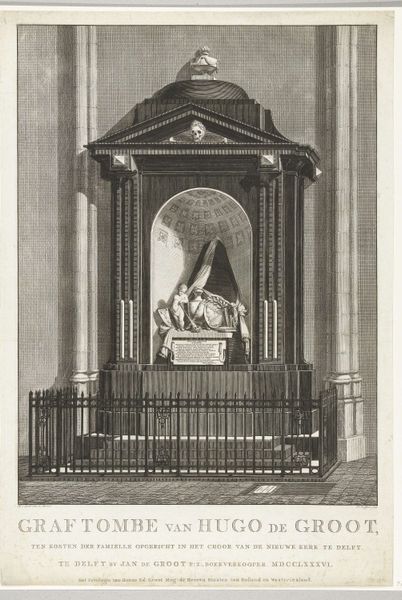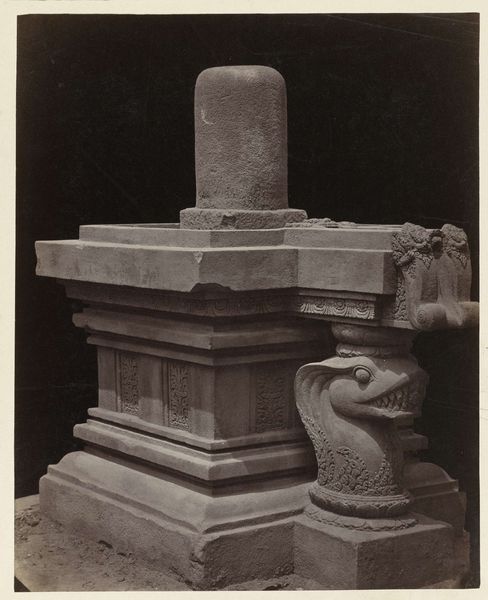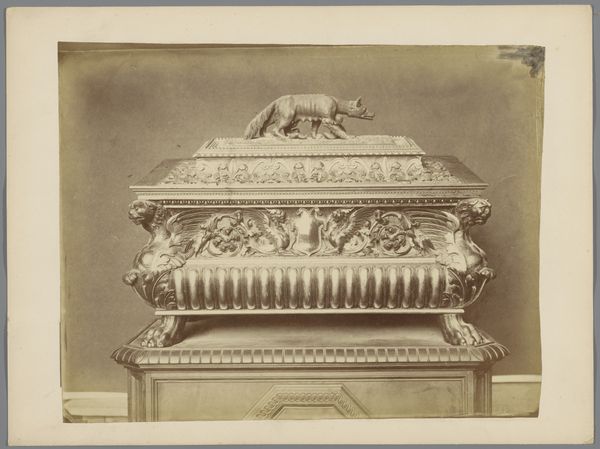
Dimensions: height 119 mm, width 185 mm
Copyright: Rijks Museum: Open Domain
This photograph captures Napoleon I’s tomb in the Dôme des Invalides. Although the image itself is a relatively straightforward reproduction, the tomb it depicts speaks volumes about the relationship between material, process, and power. Napoleon’s tomb is not made of traditional ‘art’ materials like bronze or plaster, but rather of stone. Specifically, a deep reddish-purple porphyry from Russia, selected for its imperial associations and extreme hardness. Fashioning this dense material into the tomb’s grand, classical form required an immense amount of labor, from quarrying to transport, to the highly skilled carving and polishing. This was no small undertaking. The tomb's imposing size and use of precious materials reflect Napoleon's ambition and the vast resources at his command. It embodies the power of the state to mobilize materials and labor on a grand scale. By focusing on the tomb’s materiality, we begin to see it not just as a monument to a man, but as a testament to the political economy that enabled its creation. This challenges our ideas about art, asking us to consider how power and resources shape what we see.
Comments
No comments
Be the first to comment and join the conversation on the ultimate creative platform.
